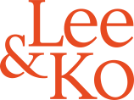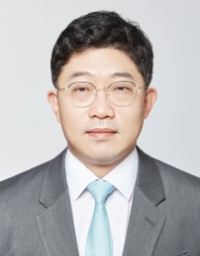Real Estate Litigation 2025 Comparisons
Contributed By Lee & Ko
Law and Practice
1. Landlord-Tenant Disputes
1.1 Access
1.1.1 Remedies for Landlords Denied Access for Repairs
Article 624 of the Civil Act stipulates: “The tenant shall not refuse the acts necessary for the preservation of the leased property carried out by the lessor.” Therefore, the tenant has an obligation to allow the lessor to perform repair works, and if such repairs require access to the leased property (such as an apartment or office), the tenant is also obligated to allow access to a reasonable extent.
However, if the tenant refuses such access, it is difficult to directly enforce access, and the lessor may seek relief by claiming damages for any loss caused or exacerbated due to the refusal of access.
While it is possible to obtain temporary access rights through an injunction from the court (ie, preliminary injunction), considering the time involved in the process and the likelihood of it being granted, it is not a practical solution for the access issue. However, if the repairs or maintenance are not urgent, a provisional measure may be possible through a request for an injunction to prevent obstruction of entry.
1.1.2 Emergency Access
As mentioned in 1.1.1 Remedies for Landlords Denied Access for Repairs, it is difficult to envision a direct or immediate remedy, and considering the time required for the injunction process, it is especially ineffective in emergency situations. Therefore, the issue should be approached from the perspective of compensation for damages caused by the refusal of such access. However, if the emergency situation involves matters like fire or threats to life, and the lessor uses forceful means of access (which could be perceived as unlawful entry) under their own judgment, such access would be evaluated in terms of whether it was carried out to avoid imminent danger and whether it justifies criminal responsibility.
1.1.3 Impact on Neighbours
If a tenant’s failure to provide access begins to impede neighbours’ use of their units, as in the case of the landlord, the likely remedy available to those neighbours would be a claim for damages caused by the refusal of such access.
1.2 Harassment
1.2.1 Landlord Harassment
Article 625 of the Civil Act stipulates: “If the lessor carries out preservation acts against the will of the tenant, and if the tenant is unable to achieve the purpose of the lease due to such acts, the tenant may terminate the contract.” Therefore, if it is determined that the lessor’s excessive preservation acts prevent the tenant from achieving the purpose of the lease, the tenant may terminate their lease.
However, from the tenant’s perspective, there is no direct remedy/measure available that is immediately enforceable against the lessor to cease such acts. If the lessor’s actions constitute a criminal offence (eg, unlawful entry), the tenant can seek punishment for the crime and claim damages by asserting civil liability for unlawful acts. If such interference is expected to continue for a prolonged period, the tenant may also consider applying for an injunction to prevent further access.
1.2.2 Impact of Unit Status
The legal remedies available to tenants do not differ depending on the legal nature of the leased property. The Residential Tenancy Protection Act and the Commercial Tenancy Protection Act primarily focus on protecting security deposits, granting renewal rights for lease agreements, and limiting rent increases, but they do not separately provide specific remedies for such cases.
1.2.3 Consequences of a Regulatory Finding of Landlord Harassment
As noted above, under the South Korean legal regime, there are no separate institutions or regulations that specifically control landlord harassment or similar actions against tenants. These matters are left to be addressed within the realm of civil damages claims or criminal punishment for offences.
1.3 Rent Stabilisation/Regulation
1.3.1 Statutory Tenancies: Types and Differences
In South Korea, the Housing Lease Protection Act applies to residential leases, guaranteeing a two-year contract period, with tenants having the right to request one renewal for another two years (with certain exceptions). Additionally, any rent increase during the renewal is limited to a 5% range.
For commercial leases, the Commercial Lease Protection Act guarantees the renewal of contracts for up to ten years (with certain exceptions), and similar to residential leases, rent increases are also limited to a 5% range. However, for leases with a security deposit that exceeds a certain amount, the rent increase limitation does not apply.
Moreover, if neither of the above laws applies, Article 639 of the Civil Act provides for an ‘implied’ renewal right. This means that if the tenant continues to use and enjoy the leased property after the lease period expires, and the landlord does not object within a reasonable time, the lease is considered renewed under the same terms as the previous lease.
1.3.2 Exceptions to Renewing a Statutory Tenancy
In the case of residential leases, the Housing Lease Protection Act (Article 6-3, Section 1) specifies exceptions to renewal of a statutory tenancy for tenant default (such as arrears of two months’ rent) or fraudulent actions (such as illegal subletting, unauthorised assignment, or damage to the property), as well as for when the landlord intends to directly reside in the property.
Similarly, for commercial leases, the Commercial Lease Protection Act also lists tenant default or fraudulent actions as reasons for refusing lease renewal. Additionally, the landlord may refuse to renew the lease if they intend to reclaim possession of the property for purposes such as demolishing or reconstructing the building.
1.3.3 Converting a Statutory Tenancy to a Free Market Unit
As mentioned above, both residential and commercial leases are subject to specific regulations under special laws concerning rent adjustments and lease renewals. Any provisions that are disadvantageous to the tenant are considered invalid.
If no statutory grounds for the lessor to refuse renewal arise, the tenant is entitled to a legal lease term of up to four years for residential leases and up to ten years for commercial leases through the exercise of the renewal right. Typically, after the initial contract is signed, the lease term is extended based on the tenant’s unilateral exercise of the renewal right until the end of the specified period. After this period, the rent and contract terms can be renegotiated based on mutual agreement between the landlord and tenant.
1.3.4 Regulatory Oversight of Statutory Tenancies
The highest legal regulatory authority concerning leases in South Korea is MOLIT. MOLIT is responsible for the creation and revision of lease-related laws, managing lease contract registrations and providing contract-related information, and controlling illegal lease agreements.
MOLIT operates dedicated monitoring departments and has systems in place for reporting illegal activities to strengthen control. Its primary focus is tenant protection and the stabilisation of the real estate market. MOLIT has led policies such as strengthening tenants’ renewal rights, limiting rent increases upon renewal, and implementing reporting systems for jeonse (long-term lease) and monthly rent contracts.
1.4 Injunctive Relief in Lease Disputes
1.4.1 Injunctive Remedies for Tenants Facing Insufficient Cure Periods
In cases where a commercial tenant defaults, the tenant is generally required to promptly fulfil their obligations. Granting a cure period is the landlord’s right, and it is not typical for the tenant to object if the cure period provided by the landlord is short. In other words, the tenant should co-operate as much as possible with the landlord in granting the cure period. If the tenant fails to cure/resolve the default within that period, they may be required to fulfil obligations such as compensation for damages. For reference, granting a cure period is not commonly practised in South Korea.
In this context, it would be difficult for the tenant to seek relief through methods like an injunction unless there are exceptional circumstances.
1.4.2 Impact of Failing to Obtain an Injunction and Alternative Options
In the case of tenant default, the landlord may terminate the lease or claim damages. For example, under the Housing Lease Protection Act and other relevant laws, if the tenant’s rent arrears accumulate (eg, in residential leases, when the arrears reach two months’ rent, or in commercial leases, when they reach three months’ rent), or if the tenant enters into a sublease agreement without the landlord’s permission, the landlord is entitled to terminate the contract.
Regarding damages, they are generally handled by deducting the amount from the security deposit paid by the tenant.
In such situations, the tenant may raise a defence, such as claiming that the default does not constitute grounds for contract termination.
1.4.3 Landlord Bad Faith
The landlord’s default notice and similar notices must comply with the terms of the contract and applicable laws to be effective. If the notice is illegal or improperly issued, its validity can be contested.
If the landlord repeatedly issues default notices or notices to cure with malicious intent, the tenant may seek assistance from alternative dispute resolution (ADR) mechanisms, such as the Lease Dispute Mediation Committee under MOLIT. In order to avoid the dispute escalating to the point of litigation, resolving the issue through a mediation process to reach a mutual agreement between the landlord and tenant may be the best course of action.
1.5 Guarantees in Landlord-Tenant Context
1.5.1 Types of Guarantees in Tenancies
Typically, lease agreements require and provide for the payment of a deposit. Specifically, in South Korea, leases are categorised into two types: the jeonse system, where the tenant pays a deposit and does not pay monthly rent, and the monthly rent system, where the tenant pays rent every month. However, in practice, a hybrid model of both systems is commonly used. The deposit is paid to secure potential damages the landlord may incur during the lease period. The landlord collects interest from the deposit during the contract term and returns the deposit to the tenant at the end of the lease, minus any damage compensation or other deductions. In this way, the deposit functions as a form of collateral and a substitute for rent payments.
To guarantee the return of the deposit, tenants may establish a jeonse right as collateral or go through the process of registering their residence and obtaining a certified date after moving in. If the landlord fails to return the deposit, the tenant may proceed with an auction. In addition, tenants can secure the return of the deposit through a guarantee contract with guarantee companies such as the Korea Housing & Urban Guarantee Corporation (HUG) or Seoul Guarantee Insurance.
1.5.2 Revocation of Guarantees
As mentioned above, in South Korea, there is generally no guarantee through instruments like bonds; instead, it is common for tenants to provide cash deposits. Therefore, issues related to revocation are not frequently encountered.
The main problem arises when the landlord fails to return the deposit. In such cases, the guarantee company, such as HUG, which guarantees the return of the deposit, may refuse to fulfil its obligation to pay if the tenant failed to notify the guarantor of changes to the contract or if the information provided during the guarantee agreement was false.
In this regard, there is no significant difference between residential leases and commercial leases. Both types of leases follow similar principles in terms of deposit guarantees and the conditions under which the guarantor may refuse to fulfil their obligations.
1.5.3 Expedited Recovery
Although not common, guarantees are primarily provided by financial institutions and guarantee companies. In such cases, the guarantee can be realised by promptly providing information related to guarantee incidents. Typically, after undergoing the required procedures such as evaluation or review, the deposit can be recovered, and this process usually takes about one to two months.
2. Foreclosure Actions
2.1 Foreclosure Process
For real estate provided as collateral, the lender can recover the loan claim by applying for an auction to execute the security interest and receiving a portion of the sale proceeds through the distribution of the auction’s sale price.
This process of executing a security interest via auction has a non-judicial aspect in that it does not require a court judgment or execution title. However, it still falls under the judicial procedure, as it follows the process outlined in the Civil Execution Act and is under the jurisdiction of the execution court. This distinguishes it from non-judicial foreclosure processes used in some countries like the USA, where the foreclosure can proceed without going through the court system.
2.2 Foreclosing on Pledged Equity
When a property owner provides a portion of their ownership interest as collateral, the lender can seize that specific share of the property. If the creditor applies for an auction on the provided ownership share, the court will issue a decision to commence the auction process, seizing the share of ownership and proceeding with the auction procedure. This auction, like other enforcement actions, is governed by the procedures set forth in the Civil Execution Act and falls under the jurisdiction of the execution court, making it a judicial procedure.
2.3 Notice Requirements for Non-Judicial Foreclosures
As noted earlier, in South Korea, the process of executing a security interest through an auction also involves the execution court, and it follows the procedures specified in the Civil Execution Act. Therefore, unlike non-judicial foreclosure in the USA, there are no special notification periods or steps unique to this process in South Korea, as the procedure is judicial in nature and requires court involvement.
2.4 Borrower’s Rights of Redemption in Foreclosure
If the debtor repays the debt to the creditor during an ongoing auction process but the creditor does not voluntarily withdraw the auction, the debtor can file a claim for objection and simultaneously apply for a suspension of enforcement. By doing so, the debtor can halt the ongoing auction and, if successful in the claim for objection, have the auction cancelled.
However, this cancellation of the auction by the debtor is only permitted before the successful bidder (the buyer) has fully paid the purchase price. Once the bidder has completed the payment and acquired ownership of the property, even if the court decision to start the auction is cancelled, the effect of the final approval of the sale remains intact. This means that the successful bidder’s (buyer’s) ownership rights are not affected by the cancellation of the auction decision.
2.5 Pursuing Claims Against Borrowers and Foreclosure Simultaneously
Even if a creditor with a mortgage right executes the mortgage and an auction takes place, the creditor can still file a lawsuit to demand the performance of the debt by the debtor. If the debt is partially or fully repaid through the auction, this repayment can be raised as a defence in the lawsuit seeking the performance of the debt.
If the creditor wins the lawsuit demanding the performance of the debt, the creditor can use the judgment as an execution title to apply for forced auction on the debtor’s other assets, in the capacity of a general creditor. However, in the case of claims against affiliated companies, unless the affiliated company has explicitly provided guarantees or similar assurances, claims against the affiliated company are not permitted.
2.6 Foreclosure Timelines
In South Korea, the real estate auction process is carried out in accordance with the procedures outlined in the Civil Execution Act. After the creditor applies for the auction, and the court issues the decision to commence the auction, the process from the payment of the final sale price to the transfer of ownership to the buyer can vary. This depends on factors such as the workload of the execution court, any objections raised by relevant parties, and other related circumstances. Generally, the process takes about six months to one year, but in some cases, it may take longer depending on the specific situation.
2.7 Remedies for Deficiency After Foreclosure
After the real estate auction, the process involves distributing the sale proceeds among the creditors. If there is a creditor with a priority claim or multiple creditors, the distribution is made proportionally to the amount of each creditor’s claim. As a result, there may be situations where the distributed proceeds are insufficient to fully satisfy the claims of all creditors.
In such cases, the creditor will still retain the outstanding portion of the claim that was not satisfied by the auction proceeds. The creditor can then pursue forced execution on other assets owned by the debtor to recover the remaining amount of the debt. This means that even if part of the debt is repaid through the auction proceeds, the creditor may continue to seek repayment from the debtor’s other properties.
3. Joint Venture Disputes
3.1 Common Joint Venture Entity Types and Partner Requirements
A collective investment vehicle (Jip Hap Tu Ja Ki Ku in Korean) in the form of an investment trust (Tu Ja Shin Tak in Korean, commonly known as “K-Trust”), a limited liability company under the Financial Investment Services and Capital Markets Act (the “Capital Markets Act”) (for acquisition) and a project financing vehicle (Project Keum Yoong Tu Ja Hoe Sa in Korean, commonly known as “PFV”) under the Act on Restriction on Special Cases Concerning Taxation (for development) are the predominant forms of entity for real estate projects, and the joint venture is formed either in the form of a co-operation agreement under which the parties agree to form an entity suitable for the particular project or in the form of a shareholders' agreement or the likes upon capital injection into the particular project vehicle employed.
A more common practice is to have the local partner(s) be mainly responsible for the operation of the project while foreign or financial institutional investors remain passive with respect to the day-to-day operation. If a K-Trust is formed, then, under the Capital Markets Act, the collective investment company (ie, the asset manager) is the one that forms and manages such K-Trust, and management interference by any investor is generally prohibited, while the investors may have voting/consent rights on certain fundamental matters. In the case of the LLC form of collective investment company, the collective investment company is to serve as the corporate director of the vehicle. In the PFV scheme, the day-to-day management is also delegated to asset management companies (Ja San Kwan Li Hoe Sa in Korean). In both instances, the collective investment company and the asset management companies have a fiduciary duty towards their investors.
3.2 Joint Venture Duties and Remedies for Violation
There are no statutory or common law duties that exist for persons with ownership interests in a real estate joint venture per se, other than the general principle of good faith dealing.
Upon breach of the joint venture agreement, the non-breaching party is entitled to the remedies as provided for in the joint venture agreement, such as monetary damages, special performance or forfeiture of voting/consent rights, if any.
3.3 Joint Venture Management Disputes
Given that K-Trusts and PFVs are the predominant types of entity for real estate transactions, where the power to make management decisions is exclusively conferred upon the asset managers, at least on the surface, particularly with respect to K-Trusts, there should be no ‘disputes’ per se, unless the investors (ie, the actual joint venture partners) argue that there has been a breach of fiduciary duty by such asset managers. That said, in practice, the joint venture document (in the form of the shareholders' agreement or co-operation agreement, as the case may be) often provides for dispute resolution mechanisms, mostly by providing the parties with the option to sell (and/or purchase) equity interest to (and/or from) the other party.
3.4 Enforceability of Automatic Judgment Provisions and Provisional
Under South Korean law, provisions that automatically consider a judgment as rendered upon the fulfilment of certain conditions (automatic entry of judgment) or provisions that automatically provide provisional remedies such as attachment or injunctions (automatic entry of provisional remedies) are not recognised as having legal effect.
In other words, judicial decisions such as a judgment or provisional remedies must be explicitly ordered by a court through a formal procedure. The court’s active involvement is required in all stages, and such automatic provisions do not apply in the South Korean legal system.
3.5 Winding Down Joint Ventures
While it varies depending on the type of entity employed, we have observed that the actual winding down process usually takes about four to six months (or even 12 months) after the disposition of the investment to complete (including the creditor protection notice period, which normally runs for a month) in practice. The parties should give due consideration to the time required to complete such process when setting their respective exit timelines.
4. Guarantor Liability
4.1 Types of Guarantees
In South Korea, most real estate financing is carried out on a recourse basis, while the prevalence of a single-asset entity scheme (ie, the K-Trust or the PFV) effectively makes it work as if they are non-recourse-based. The unique feature of the project financing for development projects is that the contractor (often being an affiliate of the Korean conglomerate) provides a completion guarantee and undertaking under which the contractor assumes the obligations of the (defaulting) borrower upon occurrence of certain enumerated cases (eg, bankruptcy, forfeiture/cancellation of their licence, etc).
4.2 Non-Recourse Carve-Out Guarantees
As noted in 4.1 Types of Guarantees, in South Korea, “carve-out” guarantees are not common.
4.3 Guarantee Enforceability
The Korean courts have been consistent in honouring/upholding the parties’ agreement, including any unconditional or absolute guarantees and waivers of defences thereof, unless the arrangement goes against the general principle of good morals or other social order, or the general principle of good faith and fairness provided for in the Civil Code of the Republic of Korea.
4.4 Expedited Judicial Procedures and Statutory Limitations
No expedited procedures are available that are particular to the enforcement of guarantees. We have seen more often than not that the guarantee works effectively in the form of a surety in the sense that the provisions therein require the exhaustion of the remedies against the borrower.
5. Other Issues Arising in Distressed Situations
5.1 Receivers
5.1.1 Appointment of Receivers
There is no receivership per se available for the enforcement of collateral or foreclosure given that a secured creditor may apply with the court for the commencement of the foreclosure process.
5.1.2 Common Scenarios for Receivership Appointment
Please refer to 5.1.1 Appointment of Receivers.
5.2 Real Estate Bankruptcies
5.2.1 Requirements for Single Asset Bankruptcy
The bankruptcy of a single-asset entity is allowed, and the requirement is insolvency and/or debts exceeding the assets.
5.2.2 Impact of Bankruptcy Filing
A secured claim of the mortgage lender (established prior to the bankruptcy) can be separately enforced from the bankruptcy proceeding, and the lender may recover/collect from the proceeds upon enforcement.
The bankruptcy of the debtor would not affect the guarantor, and the creditor may demand the performance of the guaranteed obligation by the guarantor.
6. Arbitration
6.1 Prevalence of Arbitration Clauses
Domestic real estate sale and purchase contracts typically use standardised terms and conditions, which usually specify litigation in court as the dispute resolution method. However, in cases involving foreign parties or large transactions, arbitration clauses may be included, though they remain relatively uncommon.
6.2 Arbitration or Litigation?
Arbitration offers a distinct advantage over litigation by resolving disputes more swiftly and providing greater flexibility in the presentation and admission of evidence. As a result, arbitration is particularly valuable in real estate transactions, serving as an effective means to achieve a fair and timely resolution.
6.3 Prevalence of Mediation
Mediation is seldom used in South Korea, both in general and within real estate transactional contracts.
7. Provisional Remedies
7.1 Types of Provisional Remedies in Real Estate Disputes
Provisional remedies include measures such as injunctions to maintain the status quo of property title, garnishments to secure monetary claims, and injunctions to prevent interference with the peaceful possession and enjoyment of property. Among the remedies mentioned, an injunction to maintain the status quo of property title is a common provisional remedy, which enables a creditor to prevent the sale or encumbrance of real property while a dispute is ongoing in relation to that property.
7.2 Requirements for Obtaining a Provisional Remedy
A court order is required to obtain any provisional remedy, and such remedies cannot be secured through any other procedure.
7.3 Risks of Improper Use of Provisional Remedies
The plaintiff is required to compensate the defendant for any damages incurred as a result of an improper or fraudulent provisional remedy.
7.4 Availability of Temporary Injunctions
Provided the necessary elements for a temporary injunction are met, the courts are willing to issue such injunctions.
7.5 Proving Irreparable Harm
South Korean courts do not mandate irreparable harm as a prerequisite for a preliminary injunction. Instead, such injunctions are granted when there is a concern that a party will either be unable to enforce its rights or face significant difficulty in doing so if the status quo is altered.
7.6 Mechanic’s Liens
A court order is not required to place a lien on a property; it can be done when the conditions outlined in the Civil or Commercial Codes are met. Unless a covenant excludes the lien, a contractor may place a lien on a lawfully occupied property to secure a debt that is due and payable.
8. Real Estate Investment Trusts (REITs) and Single-Family Rentals (SFRs)
8.1 REIT/SFR Regulation
The Special Act on Private Rental Housing or the House Lease Protection Act are typically applied, as, generally, when private equity firms or real estate investment trusts acquire or develop residential units, they register as private rental housing operators and use the properties for rental purposes. On the other hand, regarding the financing required for the acquisition of rental housing, the loan-to-value (LTV) regulations under the Banking Act and related regulations apply, with relatively strict standards for the LTV ratios of residential units. Generally, the government entity responsible for residential units is MOLIT, while the Financial Services Commission governs the LTV regulations that relate to residential units.
8.2 Public Interest
In South Korea, housing-related issues are sensitive matters, and the supply of rental housing is considered with the public interest in mind. As a result, regulations are often interpreted in a way that favours tenants (individuals) more than rental housing operators (corporations). Accordingly, rental business operators, such as private equity firms or real estate investment trusts, should always consider the regulations that relate to rent increases, mandatory lease periods and other relevant factors. In particular, when a landlord wishes to evict a tenant, even if the lease period has ended, it is prohibited for the landlord to unilaterally carry out the eviction without a court ruling, if the tenant has not vacated the property.
Lee & Ko
Hanjin Building
63 Namdaemun-ro
Jung-gu
Seoul 04532
Korea
+82.2.772.4937
+82.2.772.4001
junghwan.lee@leeko.com www.leeko.com



